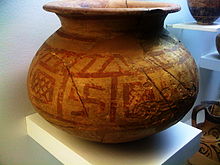Nesactium
This article includes a list of general references, but it remains largely unverified because it lacks sufficient corresponding inline citations. (August 2015) |



Nesactium (Istrian dialect: Vizače, Croatian: Nezakcij, Italian: Nesazio) was an ancient fortified town and hill fort of the Histri tribe. Its ruins are located in southern Istria, Croatia, between the villages of Muntić and Valtura.
History[]
In pre-Roman times, Nesactium, ruled by its legendary king Epulon, was the capital of the tribal population of the peninsula called Histri, who were also connected to the prehistoric Castellieri culture. Some theories state a later Celtic influence, but who they were and where they came from has never been discovered for certain. It is believed that their main economic activities were trade and piracy all over the ancient Mediterranean Sea.
In 177 BC, the town was conquered by the Romans and destroyed.[1] Rebuilt upon the original Histrian pattern, it was a Roman town until 46–45 BC, when the Ancient Greek colony Polai was elevated[clarification needed] to Pietas Iulia, today Pula. The town was located on the ancient road Via Flavia, which connected Trieste to Dalmatia. The area was abandoned by the Romans in the 6th century, following the Slav invasions.[1] Its Histro-Roman walls still remain.
References[]
- ^ Jump up to: a b "Nesactium Hillfort". megalithic.co.uk. Retrieved 25 September 2015.
External links[]
Coordinates: 44°55′0″N 13°58′11″E / 44.91667°N 13.96972°E
- Iron Age sites in Europe
- Megalithic monuments in Europe
- Forts in Croatia
- Illyrian Croatia
- Archaeology of Illyria
- Archaeological sites in Croatia
- Former populated places in the Balkans
- Cities in ancient Illyria
- Oppida
- Roman fortifications in Croatia
- Istria County geography stubs

